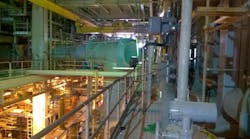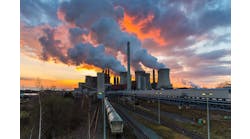The chemical industry is undergoing rapid transformations, spurred by evolving environmental concerns and changing customer preferences. To stay competitive, process plants must swiftly adapt, requiring more flexibility and reconfigurability. The ability to make rapid changes in chemical processing plants is crucial for adjusting product specifications, production capacity, and overall functionality in response to dynamic market or regulatory requirements. Often, these changes are sudden and unpredictable, demanding fast responses. Unfortunately, operational flexibility and reconfigurability are frequently overlooked, resulting in many plants lacking the necessary adaptability.
Reconfigurability, adaptability and production flexibility become exceptionally valuable during disruptive events, such as the COVID-19 pandemic and other disasters. Operational flexibility and reconfigurability are intricately linked and connect with key topics like modularization, adjustability, equipment/machinery capacity variation, provisions for future changes, redundancy, upgrading/expansion possibilities, effective maintenance and problem-solving capabilities.
Here are some practical insights and useful guidelines to address the challenges and opportunities associated with these crucial concepts.
Operational Flexibility and Its Sources
Operational flexibility comprises various functions, including product design and operational volume/capacity, among others. Many of these processes interconnected, with an increase in one area potentially impacting another. However, there are instances where trade-offs between the different functions become necessary.
Numerous sources contribute to operational flexibility within equipment, machinery, assemblies and other plant operations. Identifying and enhancing these sources is crucial, spanning across both physical and institutional aspects of the plant. Potential variables impacting flexibility may include storage units, production/generation processes, transferring/handling networks and heat-generation/transfer units.
A key aspect is understanding the permitted operating range (capacity, specification, etc.) of each function. Examples include the capacity control range of machinery, heat/refrigeration rates and recommended operating parameters (temperature, pressure, flow rate) for each system.
Flexible Generation/Production and Storage
It’s possible to modify the production/generation/transfer rate of a product (or intermediate product) to meet new demand cycles. Many modern production or generation units provide the ability to rapidly ramp up and ramp down the output to follow the demand. An alternative is the use of parallel operating units, which operators can quickly shut down and start up based on demand.
Flexibility and Reconfigurability in Design and Operation
Certainly, the installation of new equipment within an operational plant presents myriad challenges, ranging from space limitations to the complexities of integration, including battery limits and interfaces. Anticipating and addressing these challenges can significantly enhance the plant's overall flexibility and reconfigurability.
A key strategy involves allocating spare space for the future installation of machinery and equipment. Crucially, meticulous planning for proper tie-ins and battery limits, which include connecting flanges and valves, proves invaluable for accommodating future changes. The provision of isolation valves, connecting flanges, and blind flanges with prefabricated skids ensures a seamless integration of equipment and machinery with minimal or even zero downtime for the existing operational units.
The strategic placement of isolation valves allows for the isolation of tie-ins, while the removal of blind flanges facilitates the installation and connection of prefabricated piping spools using compatible flanges. This streamlined process theoretically eliminates the need for hot-works and welding if orchestrated with precision.
In practical terms, layouts should explicitly show spare, or future, space, offering a visual blueprint for potential expansions. Moreover, considerations for future spaces should extend to piping, lines, access roads, storage areas, and beyond. A notable example is dedicating 20% to 25% spare space on all pipe-racks, anticipating future piping needs and ensuring adaptability for evolving plant requirements.
Automate With Caution
Many modern-day facilities are operated based on automation and remote-control concepts. Therefore, operators and workers are not usually in direct physical contact with actual facilities during operation. On one hand, more automation and remote control usually improve productivity, safety and operation. On the other hand, it’s important to avoid complicated and untested systems and to select simple, properly verified solutions with good working references. Detailed and careful evaluations are the key for success. The automation system must provide possibilities for manual intervention to enable additional operational flexibility and fine tuning. Too much automation may hinder operational performance and flexibility. The automation and control system should still be able to be reconfigured and reprogrammed to provide opportunities for alternative operating scenarios.
Reconfigurability Core Characteristics
Reconfigurability is often referred to as the ability to add, remove or rearrange systems in a facility in a timely and cost-effective manner, which can result in a desired set of alternate operational configurations. The reconfigurability is based on a systematic approach to the design and operation of reconfigurable facilities for alternative production.
Typical reconfigurability characteristics include modularity, integrability, scalability, convertibility and compartmentalization. These are applied to the operation of the whole plant, as well as to its components, machinery and other key functional elements. Here’s a closer look at some of these key elements:
Modularization and Compartmentalization: Components and assemblies can be modular for better reconfiguration. When necessary, chemical processing plants can replace or upgrade modular components to better suit new applications. Modules are easier to assemble, disassemble, maintain, update and upgrade. The compartmentalization of functions into properly categorized operational units is very useful. These units also allow for switching between alternate operational schemes to achieve the optimal arrangement to fit a given set of needs.
Convertibility, Part Replacement and Switching: Convertibility is the ability to easily transform the functionality of existing equipment, machinery, systems or controls to suit new operational requirements. The convertibility for each piece of equipment or system may have several levels. The conversion may need switching, manual adjustment or part replacement. More sophisticated equipment may have advanced mechanisms that allow for easy conversion between parts, as well as sensing and control methods that enable quick and often automatic adjustments of the equipment after the conversion. However, part replacement, off-line setting and manual adjustments have been more common.
Scalability: Scalability is the ability to easily change production capacity by rearranging or reconfiguring existing equipment. Obviously, the capacity control capability of each type of machinery would be important in the overall operational flexibility and reconfigurability of the facility.
Reconfigurability, adaptability and production flexibility are important features of modern plants to deal with modern-day challenges. Meticulous approach and planning are needed to achieve optimum details of a plant regrading reconfigurability, adaptability and operational flexibility. Detailed and careful studies and evaluations are the keys for success.




